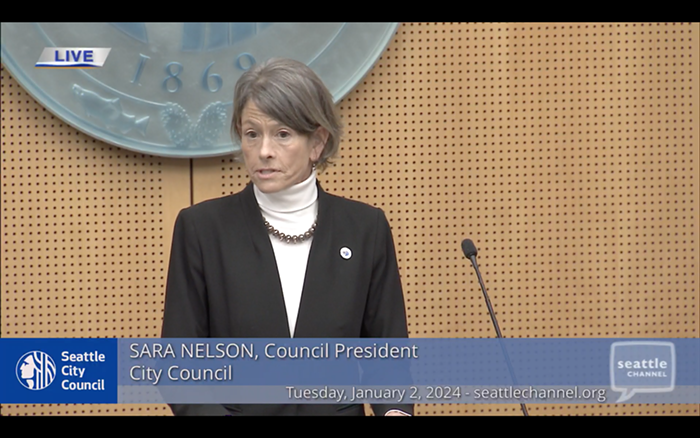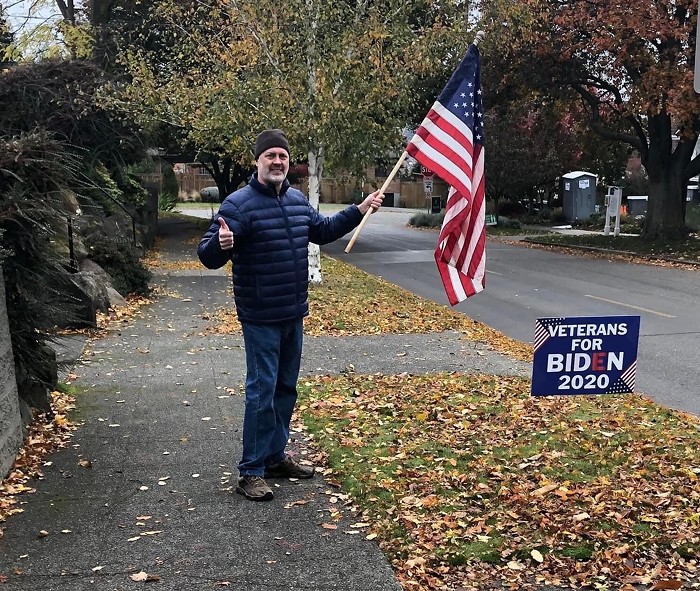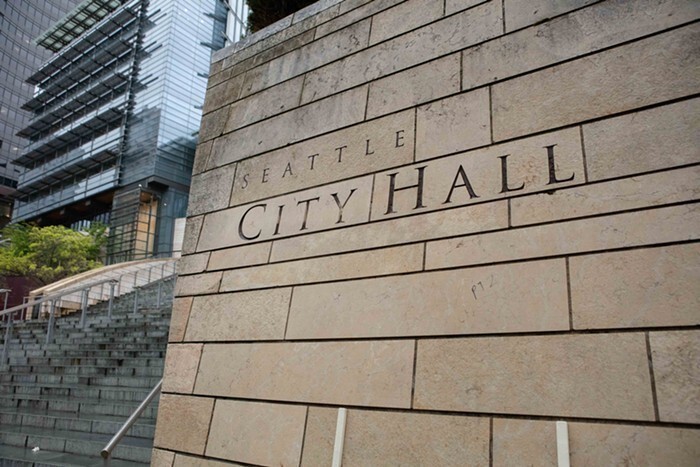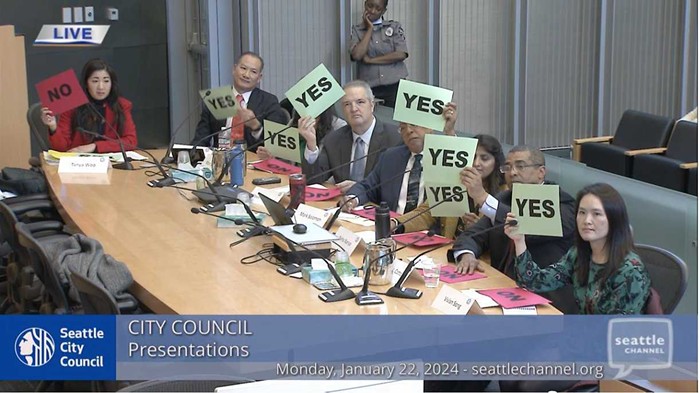I'm sitting in the cafeteria of the Mirabella, a 12-story retirement home in South Lake Union that occupies a full city block, with residents and neighbors who fear the area will change for the worse if the city rezones the neighborhood to allow skyscrapers. They're trying to convince me that they're not anti-density. "If that attitude was here, this building wouldn't be here," says neighborhood activist Lloyd Douglas, pointing out that the Mirabella is one of the tallest buildings in the area. Douglas is a member of the Lake Union Opportunity Alliance, a community group fighting against city proposals for taller towers in the neighborhood but whose website dismisses the "NIMBY" label (short for the derisive term "not in my backyard").
"People say, 'You people just want private views.' That's a lie," says John Pehrson, a Mirabella resident. He points out that both Douglas and Christine Lea of the Cascade Neighborhood Council, who is also fighting the rezoning proposal, both have views only of the freeway and thus no great view to lose.
Over the next few months, the Seattle City Council will consider new rules for construction in South Lake Union—a former light-industrial swath north of downtown that is now sprinkled with squat new office buildings—that would add 200 feet or more to some height limits, making the tallest buildings up to 40 stories tall. This would effectively extend the reach of downtown nearly a mile north of Denny Way, helping the city accommodate more residents, more businesses, and ultimately a larger tax base. But the organizations headed by Pehrson, Douglas, and Lea have banded together to oppose this plan, forming the South Lake Union Community Coalition (SLUCC). They are concerned that a thicket of skyscrapers will erode the neighborhood's "character" and erase its history.
Having observed the neighborhood's rapid growth over the last decade, they say that they're happy to see new and diverse development within the confines of current height limits. "I've been here five years," Pehrson says. "In that time, four low-income housing projects have moved in. Nobody in the neighborhood complained. This isn't a NIMBY neighborhood."
Pehrson, a retired engineer, shows me slide after slide of a PowerPoint presentation explaining their specific concerns. For example, the proposal currently under consideration would allow three 24-story towers on Mercer Street. He argues they would cut off the neighborhood from the water, shade Lake Union Park, and loom over the shorter buildings. SLUCC recommends keeping the current zoning (now only 40 feet) or, as a compromise, shrinking the towers in scale. They say the city claims building heights would step down toward the water, but, Pehrson tells me, "I don't know how you can say that with a straight face," because these 24-story towers would be about a block from the shore of Lake Union.
But city council member Richard Conlin, who chairs the Planning, Land Use, and Sustainability Committee, says this is "greatly exaggerated as an issue." The tallest buildings in the neighborhood, at 400 feet, would be further south, closer to downtown and several blocks from the water, and "the land slopes down 100 feet" by the shore. Further, he says, the "widely spaced towers" protect sight lines. "It's a very good compromise."
As evidence that current zoning rules are working well, Pehrson points to Paul Allen's Vulcan Real Estate development called Stack House, which he says is "a great example of low-rise, high-density residential development" that fits about 300 apartments on three-quarters of a block, includes open space, and preserves a historic smokestack. "We don't demonize Vulcan," he says. "They have done and are doing some great work."
For Vulcan's part, spokeswoman Lori Mason Curran explains that when people imagine the new buildings, they "picture the Mirabella but taller," but that's not what they'll look like. "We don't have any buildings in Seattle right now that actually look like" what the new zoning will allow in South Lake Union—skinny towers meant to preserve sight lines. "You have to have so much open space and the floor plans have to be smaller."
Curran and Conlin agree that new development may shade Lake Union Park on the darker days of the year. Curran says people should "look at the park when there's the most sun" instead of focusing on winter days; Conlin says he's concerned by the shadow studies.
Pehrson, Douglas, and Lea say they will keep attending city council meetings, making presentations to lawmakers and developers, and reaching out to the media. I asked Lea if she thinks they can really get a seat at the table in this discussion. "I think we are sitting at the table," she tells me brightly. "We're going to be living with this for a very long time. And it's really important to get it right." ![]()



















